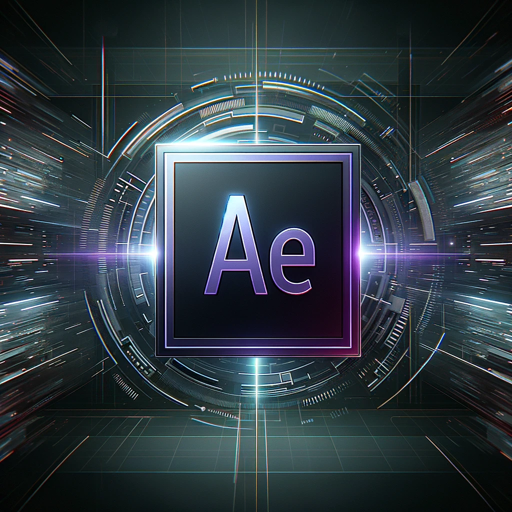Nuke & Hiero Script-automation for Nuke and Hiero.
Automate Nuke & Hiero with AI-powered scripts.
Foundary의 API에 대해 알려주세요.
NukeStudio 스크립트 도움이 필요합니다.
Hiero Python 스크립팅 질문이 있어요.
Nuke API 관련 도움을 주세요.
Related Tools
Load More
Script Pro
🔴#1 AI for YouTube Scripts🔴 Creates and analyzes YouTube scripts step-by-step with accurate word count. Feel free to try: https://chat.openai.com/g/g-u6ooEbi8z-script-to-video-generator

AE Script Dev
A virtual software engineer specializing in Adobe After Effects scripts and expressions.

Script Pro
Turn your ideas into film scripts

SkriptX
I am SkriptX a gpt 4 based model i program complex minecraft skripts.
스크립트
Expert in Korean-themed storytelling
The Reaper Script Wizard
Expert in LUA, EEL2, Python, and JSFX script development for Reaper 7, communicating in English
20.0 / 5 (200 votes)
Detailed Introduction to Nuke & Hiero Script
Nuke and Hiero Script refer to the powerful scripting and automation functionalities available within The Foundry’s Nuke, Nuke Studio, and Hiero platforms. These tools are part of the Nuke family, widely used in compositing, VFX, and post-production workflows. Nuke’s scripting capabilities are mainly built around Python, enabling users to extend the platform's functionalities, automate repetitive tasks, create custom workflows, and integrate third-party tools. Hiero Script (focused on Nuke Studio and Hiero) allows users to automate tasks related to editorial timelines, conforming, and managing VFX shot production. These scripting interfaces are designed to cater to both technical artists and developers who need more than what is offered by the standard UI. Examples include automating render management, shot versioning, creating custom node-based tools, and integrating Nuke into larger pipelines. In Nuke Studio and Hiero, Python scripting can be used to build custom editorial tools, automate exporting and rendering timelines, or integrate editorial workflows into larger production environments.

Key Functions and Their Applications
Automation of Repetitive Tasks
Example
Rendering and Export Automation
Scenario
In Nuke, a user can script the automatic rendering of specific nodes and exporting them in different formats. For example, an artist can automate the process of generating multiple versions of a composite by looping through a script that changes the input footage, adjusts settings, and exports each version without manual intervention.
Custom Node Creation
Example
Building Custom Gizmos or Nodes for Complex Operations
Scenario
Developers can create custom gizmos or Python-driven nodes to package complex setups into reusable components. For instance, a studio might require a specific type of lens distortion correction that is not available in the default tools. A Python script can be written to implement this algorithm, encapsulated as a custom Nuke node.
Pipeline Integration
Example
Integration with Asset Management Systems
Scenario
Large studios often need to integrate Nuke with asset management or version control systems like Shotgun or Ftrack. Using Python scripting, Nuke can be integrated to pull and push data (such as new versions of shots or elements) automatically from these systems. This ensures artists are always working with the latest assets, and the system tracks updates in real time.
Ideal User Groups for Nuke & Hiero Script
Technical Directors and Pipeline Developers
These users are responsible for setting up and maintaining the technical infrastructure of VFX and post-production studios. They use Nuke and Hiero Script to build custom tools, automate processes, and ensure the software integrates smoothly with other systems such as render farms, asset management, or version control. Scripting allows them to tailor Nuke to the specific needs of a studio’s workflow.
Compositing Artists with Technical Expertise
Artists who are comfortable with scripting and want to enhance their efficiency by automating repetitive tasks, creating shortcuts, or developing custom nodes and tools can benefit greatly from Nuke Script. By leveraging Python, these artists can avoid repetitive manual operations, reduce errors, and experiment with advanced visual effects that would otherwise be time-consuming or difficult to achieve through the standard GUI.

How to Use Nuke & Hiero Script
Visit aichatonline.org
Start by visiting aichatonline.org for a free trial. No login or ChatGPT Plus subscription is required to explore the tool's full potential.
Install the Foundry Nuke & Hiero software
Ensure you have Nuke, Hiero, or NukeStudio installed. You'll need access to the Foundry’s software suite to run Nuke & Hiero scripts. Prerequisite: Python must be installed on your system.
Explore the Nuke API documentation
Get familiar with Nuke’s API. The documentation provides an overview of available classes, functions, and modules to interact with the interface and automate tasks. It’s crucial for writing effective scripts.
Write or customize Python scripts
Start writing Python scripts to automate repetitive tasks like creating nodes, rendering, batch processing, or managing timelines. You can also modify existing scripts from Nuke or Hiero examples.
Execute and debug the scripts in Nuke & Hiero
Run your scripts inside Nuke or Hiero using the script editor. Test your code by executing it in parts, and use the error messages to debug any issues.
Try other advanced and practical GPTs
戰國策AI塔羅系統
AI-powered Tarot Guidance for All

Accurate medical mcq answer bot
AI-powered tool for medical MCQ mastery.

Accurate Scribe
AI-powered audio transcription made easy.

Minimum Wage Developer
AI-powered, Tailwind CSS design solutions.

Graphic Design Steve
AI-powered tool for quirky 90s-style graphics.

Pie Chart Pro
AI-powered pie charts made simple.

Factual Blogs with Semantic SEO Score
AI-driven, SEO-optimized factual blogging.
Investment Assistant
AI-driven financial analysis and strategies.

Investment Analyst
AI-Powered Investment Insights for Everyone

数据分析助手
AI-powered insights for smarter analysis

English Conversation
AI-powered English conversation practice

Irish Tax Assistant
AI-powered tax guidance for Ireland
- Batch Processing
- Node Automation
- Render Management
- Timeline Editing
- Pipeline Integration
Common Questions About Nuke & Hiero Script
What is the purpose of Nuke & Hiero scripting?
Nuke & Hiero scripting is used to automate complex or repetitive tasks in Foundry's Nuke, Hiero, and NukeStudio. It helps speed up workflows such as node creation, batch rendering, timeline management, and more by using Python-based scripting.
What are the prerequisites for using Nuke & Hiero scripts?
You need access to Nuke, Hiero, or NukeStudio and a working knowledge of Python. Familiarity with the Nuke API is important for writing scripts that interact with the interface and perform specific tasks.
Can I customize existing scripts for my project?
Yes, you can modify and extend pre-existing scripts to fit your specific project needs. Nuke & Hiero scripts are highly flexible, allowing users to adapt them for various pipeline requirements, from batch processing to automating complex VFX workflows.
How do I run a script in Nuke or Hiero?
You can run scripts directly within Nuke or Hiero by opening the script editor. Once the script is loaded, use the 'Execute' button or call specific functions within the editor to run portions of the script.
What are some common use cases for Nuke & Hiero scripting?
Typical use cases include automating node creation, batch file processing, customizing timelines, managing large compositions, and building custom render pipelines. It’s used in VFX production to streamline workflows.